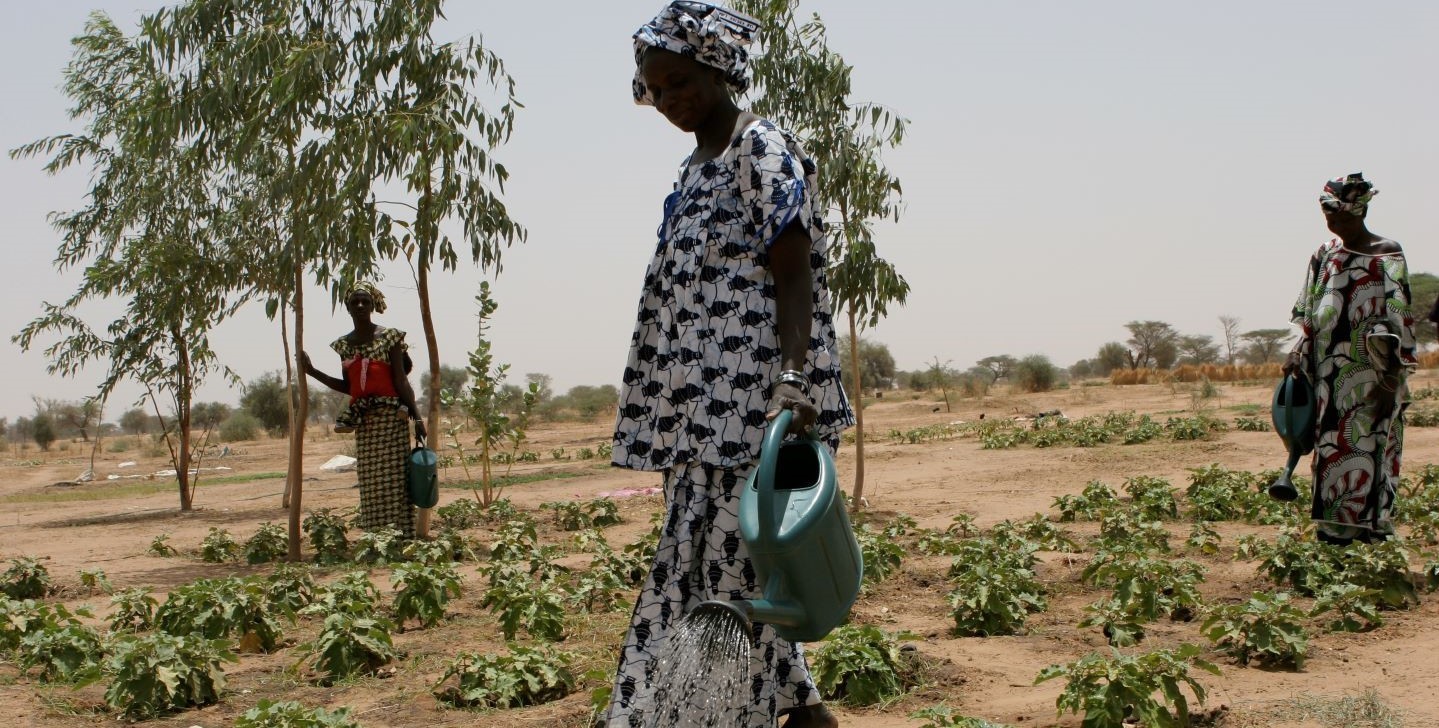Four ways nature-based solutions benefit rural people and communities
IFAD Asset Request Portlet
Asset Publisher
Four ways nature-based solutions benefit rural people and communities
Estimated reading time: 4 minutes
“Nature-based solutions” (NbS) might sound like a buzzword, but these techniques are some of the most effective tools in our arsenal against the effects of climate change.
NbS address complex problems through a flexible, customizable set of actions that have co-benefits for nature and humanity. These approaches tackle multiple challenges – including biodiversity, ecosystems, climate change adaptation and mitigation, and human well-being – simultaneously.
Well-designed NbS use natural ecosystem processes in ways that benefit people; enhance local biodiversity; preserve and even restore ecosystems; and ensure active steps are taken to mitigate and adapt to the effects of climate change.
These solutions can therefore be a part of the transformative changes we need to combat the effects of climate change on ourselves and our environments. That’s why IFAD is targeting 30 per cent of its climate finance towards NbS.
Here are four ways that NbS benefit people and the societies they live in.
1. They help impoverished rural dwellers achieve food security and access nutritious food.
Small-scale farmers cultivate 60–80 per cent of the food produced in developing countries. The ability of the poorest rural dwellers to access a varied and nutritious diet therefore depends on the crops they grow and the livestock they rear.
NbS help make food production resilient to climate change, enabling farmers to adapt effectively and to manage and improve the quality of the water, land and soil resources available to them. Their holistic approach allows for the integration of nutrition and food security concerns, too.
In Kenya’s Upper Tana region, for instance, farmers were able to double their milk and egg production by switching to cows, goats and chickens that had been bred to be more productive. They also adopted conservation agriculture practices, including reducing soil disturbance and using crop rotation to maintain soil health, that enhanced their land and labour productivity while greatly reducing costs.
2. They limit the impact of natural disasters on communities and their environments.
Extreme weather events are occurring more often and with greater intensity due to climate change, and the chaos they leave in their wake often spells severe hardship for small-scale producers. Fortunately, NbS can help mitigate the effects of these shocks.
NbS can even help prevent the worst of these consequences from occurring through active efforts to increase the resilience of ecosystems and communities. This can take the form of, for example, planting a diverse range of crops to lessen the impact of failures, increasing agrobiodiversity as a way to mitigate pests, or drawing on traditional knowledge and practices.
For instance, IFAD’s Indigenous Peoples Assistance Facility helped Babanakira communities in the Solomon Islands reduce the impacts of storm surges by re-vegetating coastal areas and restoring mangroves. They also supported these communities’ efforts to diversify their crops and their use of traditional restrictions on excessive tree-cutting and fishing to sustainably manage their fisheries and hunting grounds.
3. They reduce the social and economic impacts of climate change on rural dwellers.
The patterns of rural life are already changing in response to the climate, and these changes bring a growing risk of lost livelihoods and food insecurity to rural areas that are already impoverished. If young people see no future in these areas, they are likely to migrate. Beyond depriving these regions of vitality, migration can build societal pressures and contribute to conflict risks elsewhere.
NbS can help here, too. By promoting practices that diversify production and reduce food waste, and by encouraging the growth of local food processing industries, NbS can support an ecosystem of “midstream” producers in a vibrant economic landscape connected with local and national markets.
These solutions even extend to the policy level: they include promoting governance structures for natural resource management, creating green jobs, and protecting rights of access to land and resources. In doing so, they take the needs of historically marginalized groups, such as women and indigenous peoples, into account.
In Sudan, for example, the IFAD-supported BIRDP project has established a framework for communities to manage their land and water resources and peacefully resolve conflicts.
Meanwhile, in Brazil’s Bahia region, the IFAD-supported PSA project helps farmers, especially women and ethnic minorities, grow highly diverse creole (traditional) seed varieties and receive certifications for producing biodiverse foods. This has improved crop diversity, added value and improved their access to markets.
4. They validate small-scale rural producers and indigenous peoples as guardians of the natural environment.
Small-scale farming can be far more environmentally sustainable than industrial farming. Not only do small-scale farmers produce more diverse foods, they are more in tune with the local landscapes on which they depend. Similarly, indigenous peoples have long-standing experience in, and commitment to, sustainably managing their natural environment.
Well-designed NbS prove what small-scale producers and indigenous peoples have known all along: their localized knowledge and traditional practices offer solutions that work.
In Burkina Faso, for instance, an IFAD-supported project worked with farmers to use the indigenous zaï technique, in which special pits are dug before the rainy season to capture water and restore the soil. Meanwhile, a local farmer came up with a modification to the technique that involves adding compost to the soil. Altogether, these changes have increased yields by up to five-fold.
IFAD recently published a report on our experiences with NbS. You can read the full report here.
Publication date: 10 November 2021